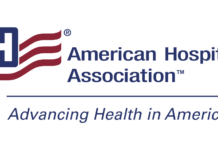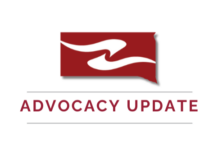
The South Dakota Association of Healthcare Organizations received communications that the Association of Healthcare Value Analysis Professionals (AHVAP) and The Association of periOperative Registered Nurses (AORN) issued a Joint Statement on potential impacts of North Carolina Baxter Manufacturing Facilities. The manufacturing is temporary closed due to impacts of Hurricane Helene, which may create potential IV fluids supply chain disruptions. SDAHO feels it is important to share the latest details on this evolving situation with all members, in addition the association sends it prayers for all of those impacted by Hurricane Helene. Below is the original joint statement, which can also be found by clicking here.
Dear Perioperative Nursing Professionals and Leaders,
AORN is a strategic partner of the Association of Healthcare Value Analysis Professionals (AHVAP). As part of this relationship, we are sharing this joint communication with all AHVAP and AORN members regarding an ongoing issue that will likely have significant impacts on the availability of intravenous fluids for healthcare facilities due to the recent impacts of Hurricane Helene.
As many of you are aware, the Baxter North Cove, North Carolina manufacturing facility was recently directly impacted by the devastating impacts of Hurricane Helene and is currently offline. The facility is currently closed due to the impacts of the hurricane and Baxter is working aggressively to preserve as much product as safely possible in collaboration with the Food and Drug Administration. Due to road closures in the area, physical access to the facility has also been extremely difficult.
In light of the recent closure of Baxter’s North Carolina manufacturing site due to Hurricane Helene, healthcare providers could face a significant reduction in the availability of intravenous (IV) fluids. As this shortage continues to impact healthcare facilities nationwide, it is critical that providers take immediate and strategic steps to preserve the limited supply of IV fluids, ensuring that they remain available for patients with the most urgent clinical need.
To effectively manage the reduced supply, healthcare providers should adopt the following strategies to optimize the use of intravenous fluids, in collaboration with your system’s anesthesiology and pharmacy departments:
Prioritize IV Fluids for Critical Care Patients: Providers should carefully assess each patient’s clinical need for IV fluids, prioritizing their use for critically ill patients, those undergoing surgeries, or those with conditions where IV administration is necessary for life-saving hydration, medication delivery, or electrolyte balance.
Encourage Oral Hydration When Clinically Appropriate: For patients who are able to tolerate oral intake, healthcare providers should prioritize oral hydration over intravenous fluids whenever clinically appropriate. This includes encouraging the use of oral rehydration solutions, electrolyte replacement drinks, and regular fluids to meet hydration needs. Providers should exercise their best clinical judgment and follow evidence-based guidelines for patient care treatment.
Review and Adjust Clinical Protocols: Facilities should review their clinical protocols to identify opportunities for reducing IV fluid usage when possible, particularly in routine cases where oral hydration or alternative routes of administration may be sufficient. Consider adjustments in post-operative care, where oral hydration might be introduced earlier in recovery for eligible patients.
Minimize Waste Through Precise Dosing and Administration: Healthcare providers should take steps to reduce wastage of IV fluids by ensuring precise dosing and administration. This includes accurately calculating fluid requirements, limiting the use of IV fluids to the exact volume needed, and preventing over-administration or unnecessary continuation of IV therapies.
Use Alternative Routes of Medication Administration: When possible, healthcare providers should consider alternative routes of administration for medications that are typically delivered intravenously. Oral, subcutaneous, or intramuscular administration of medications can help conserve IV fluids for patients who cannot tolerate these alternatives.
Educate Staff on Conservation Efforts: All clinical staff should be educated on the importance of conserving IV fluids during this shortage. Regular communication should emphasize the necessity of critical thinking in assessing the need for IV fluids and implementing strategies for conserving supplies without compromising patient care.
By adopting these strategies, healthcare providers can help preserve the remaining supply of intravenous fluids, ensuring that this vital resource is available for patients who most critically need it. Preserving the integrity of care while managing limited resources will be key to navigating the challenges posed by the recent disruption in the supply chain. We thank all healthcare professionals for their diligence and adaptability in maintaining patient safety and care quality during this period.
Thank you for your continued dedication and adaptability in these challenging times. Together, we can safeguard the delivery of essential care in the face of uncertainty. AHVAP has added this information to the emergency resource page for this issue, which is available to all healthcare professionals here: ACCESS HERE.
As new information becomes available, AHVAP will post it on this dedicated resource center for all AHVAP and AORN members, as well as the general healthcare community. We encourage perioperative and healthcare value analysis teams to collaborate on this potential threat to healthcare supply chain to ensure continuity of care for your patients.
Additionally, healthcare facilities should regularly monitor the Baxter webpage where updated information is being provided.






